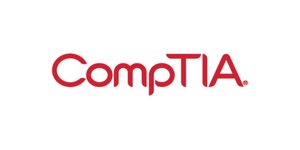DOWNERS GROVE, Ill., Sept. 11, 2017 /PRNewswire/ -- As companies rely more on cloud-based applications and foray into new areas such as the Internet of Things, comprehensive technology architecture planning is quickly becoming an essential need, according to a new report from CompTIA, the world's leading technology association.
Today, just 34 percent of companies say they build IT architecture strategies beyond a 12-month window, according to a survey of 500 U.S. firms for CompTIA's "Planning a Modern IT Architecture" report. Yet a majority acknowledge the need for improved planning across their entire IT architecture – hardware, development (software), data, and security.
"Organizations see real benefits from better planning, such as improved collaboration between IT and business teams; and a greater ability to evaluate current technologies against long-term objectives and to prioritize investments," said Seth Robinson, senior director, technology analysis, CompTIA.
For CIOs architectural planning presents another opportunity to strengthen ties between the IT team and business units.
"By connecting the construction of IT architecture to overall corporate objectives, both groups will be better informed about the options available and the tradeoffs involved when selecting devices, applications, or operational models," Robinson explained.
The obstacles to more comprehensive architectural planning are not insignificant. Four in 10 companies identify the lack of budget for heavy investment in new architecture. One-third of firms say they don't have the knowledge on emerging technologies and new trends to formulate an integration plan.
"The encouraging news is that very few companies believe the concepts of planning a new technology architecture are too difficult to implement," Robinson said.
The practice of enterprise architecture planning has generally been confined to the largest organizations because it's a resource-intense exercise that can be too onerous for smaller businesses. But the general concept – aligning business objectives with technical infrastructure – is one that many companies can benefit from. Robinson cites two examples: cloud computing and the Internet of Things.
"The top challenge for companies as they utilize cloud solutions is integration with existing systems, showing that in-depth planning is needed to maximize the benefits of a cloud-first strategy," he said.
If cloud computing is redefining the way that the IT infrastructure is built, the Internet of Things (IoT) is dramatically expanding the scale and scope of that infrastructure.
"The primary characteristics of IoT are connectivity and intelligence," Robinson explained. "Physical objects that had no digital capability are being outfitted with sensors, CPUs and networking connections. This will provide significant new opportunities for automation, data capture and data analysis; but it will also present major new challenges to IT operations."
"Planning a Modern IT Architecture" is based on a May 2017 survey of 500 U.S. businesses. The complete report is available at CompTIA Insight & Tools.
Contact:
Steven Ostrowski
CompTIA
[email protected]
630-678-8468
SOURCE CompTIA
Related Links
WANT YOUR COMPANY'S NEWS FEATURED ON PRNEWSWIRE.COM?
Newsrooms &
Influencers
Digital Media
Outlets
Journalists
Opted In






Share this article